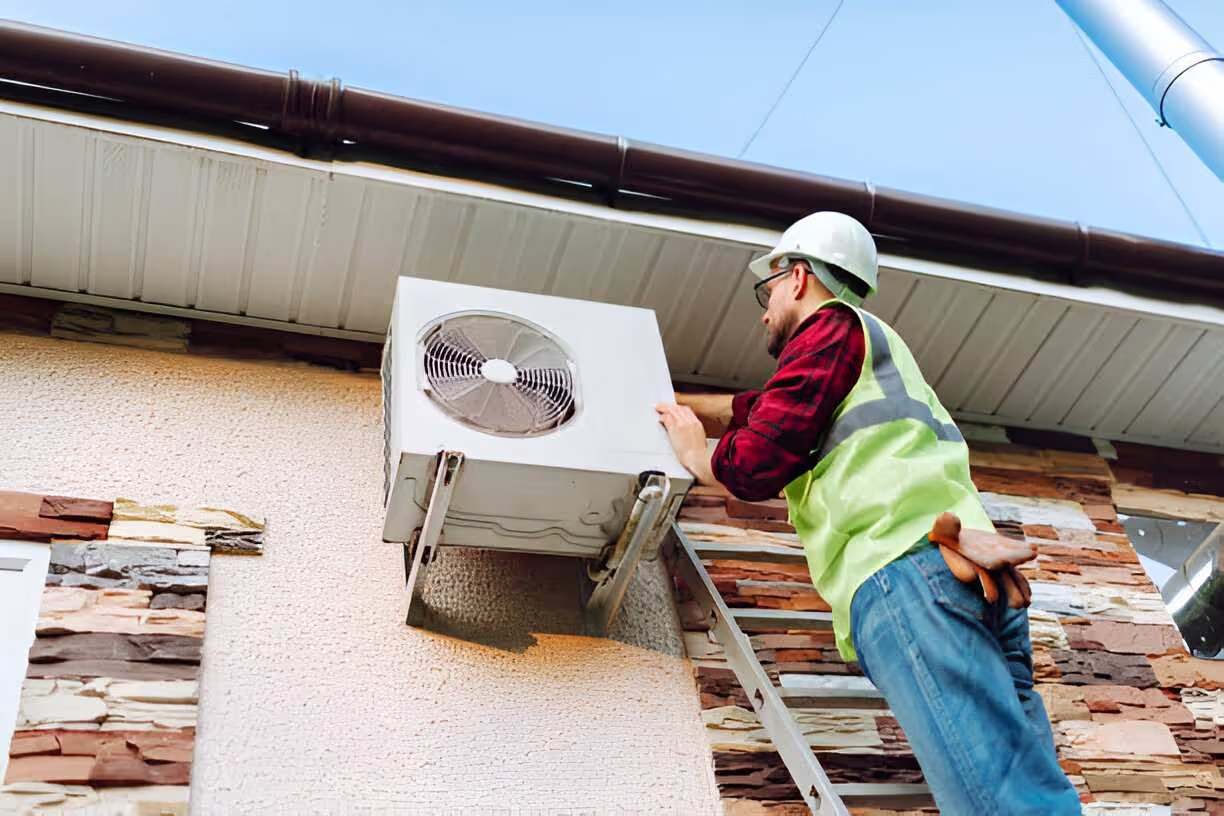Heat Pump Repair in Sarasota, FL


Why timely heat pump repair matters in Sarasota
Sarasota’s hot, humid climate and coastal salt air increase cooling demand and contribute to faster wear on outdoor components. Small issues left unresolved can lead to higher energy bills, reduced indoor comfort, and larger failures during peak-use months or hurricane season. Fast, accurate diagnostics restore performance and can extend equipment life, improve efficiency, and reduce the chance of emergency breakdowns.
Common heat pump issues in Sarasota homes
- No heating or cooling: Unit runs but does not reach set temperature. Often caused by thermostat problems, electrical supply issues, or refrigerant loss.
- Refrigerant leaks: Low refrigerant reduces capacity and can damage the compressor if not addressed. Leaks are common in older systems and near corroded fittings, especially in coastal environments.
- Compressor failure or short-cycling: The compressor is the heart of the system. Failures may come from electrical faults, refrigerant-related stress, or mechanical wear.
- Strange noises: Rattling, grinding, or hissing may indicate loose components, a failing fan motor, or refrigerant escaping.
- Frozen evaporator coil or poor airflow: Often related to clogged filters, blocked ductwork, or low refrigerant causing coil icing.
- Frequent tripping of breakers: Electrical overload, failing capacitors, or short circuits can cause repeated trips.
How diagnostics and on-site troubleshooting work
Technicians use a methodical approach to isolate the cause and prioritize safe solutions. Typical steps include:
- Initial system and safety check: Verify power at the breaker, thermostat settings, and visible signs of damage to the outdoor and indoor units.
- Operational observation: Run the system to observe startup behavior, cycle times, and audible or visible abnormalities.
- Airflow assessment: Inspect filters, supply and return vents, and blower operation. Restricted airflow can mimic many other faults.
- Electrical inspection: Test capacitors, contactors, fuses, and control board connections for proper voltage and continuity.
- Refrigerant and pressure testing: Measure refrigerant pressures and temperatures to determine charge level and detect leaks.
- Component testing: Check motors, fans, compressors, and sensors for mechanical or electrical failure.
- Report and recommendation: Present findings in plain terms, outline repair options (short-term and long-term), and explain expected timelines for parts and repairs.
Technicians commonly perform basic homeowner-friendly checks on arrival: ensuring the thermostat is set correctly, filters are clean, and outdoor unit has clearance. These quick checks can restore function in many cases.
Parts replacement and typical repair timelines
Common parts that may require replacement include capacitors, contactors, fan motors, expansion devices, and compressors. In coastal Sarasota, coil and electrical connector corrosion can also necessitate part replacement.
- Minor repairs (capacitor, contactor, filter, fan motor) are often completed the same day if parts are available on the truck.
- Moderate repairs that require ordering specific components typically take a few days depending on part availability.
- Major repairs such as compressor replacement or sealed-system work may require sourcing parts and scheduling specialized labor, extending repair time to several days. These repairs also often require pressure testing, evacuation, and recharging with refrigerant according to current regulations.
Timelines depend on part availability, system age, and whether the work involves sealed-system components that require refrigerant handling certification.
Emergency repair and temporary solutions
Heat pump emergency issues in Sarasota are most common during extreme heat or storm periods. Emergency repair options typically include:
- Rapid assessment to determine whether a temporary repair can restore operation.
- Temporary part swaps or bypasses to return basic cooling or heating while awaiting permanent replacement parts.
- Safety shutoff for systems that pose electrical or refrigerant hazards to prevent further damage.
Emergency response focuses on safety, restoring occupant comfort as quickly as practical, and preventing collateral damage like water leaks or electrical fires.
Warranty, parts, and refrigerant considerations
- Manufacturer warranties vary by component and often cover compressors and sealed systems for longer periods. Remaining manufacturer warranty can affect repair decisions on older equipment.
- Aftermarket parts may carry separate service warranties from the installer. Always request written warranty details for both labor and parts.
- Refrigerant handling must follow federal and state regulations. Technicians should be EPA-certified for refrigerant recovery and charging. Sarasota homeowners should be aware that older systems using phased-out refrigerants may require retrofitting or full replacement.
Technician qualifications and experience to expect
Qualified technicians in Sarasota should have:
- EPA Section 608 certification for refrigerant handling.
- Relevant HVAC trade licenses and local permits where required.
- Training or certification such as NATE (North American Technician Excellence) or equivalent.
- Experience working in coastal South Florida with knowledge of corrosion mitigation, high-humidity issues, and hurricane preparation.
- Clear documentation of tests performed, parts replaced, and warranty coverage.
Technicians who regularly service Sarasota homes will be familiar with common local failure modes like salt corrosion, condensate drain issues, and high runtime due to humidity.
Preventive maintenance tips to avoid future breakdowns
- Schedule professional tune-ups at least once a year and consider biannual checks in Sarasota’s climate to address heavy cooling loads.
- Replace or clean filters every 1 to 3 months during peak cooling season.
- Keep the outdoor unit free of debris, trim plants to maintain at least 2 feet of clearance, and rinse coastal salt buildup from coils periodically.
- Check condensate drains and pans for clogs to prevent water damage and microbial growth.
- Maintain proper airflow by keeping return and supply vents unobstructed and sealing major duct leaks.
- Before hurricane season, secure or cover lightweight outdoor units and arrange inspections after storms to check for damage or flood impacts.
Conclusion
Heat pump repair in Sarasota, FL requires a combination of accurate diagnostics, knowledge of coastal climate effects, and qualified technicians who can handle electrical, mechanical, and refrigerant-related issues. Prompt repairs restore comfort and efficiency, reduce energy costs, and prevent small issues from becoming major failures. Regular maintenance and climate-aware precautions significantly lower the risk of unexpected outages in Sarasota homes.
Service Areas


